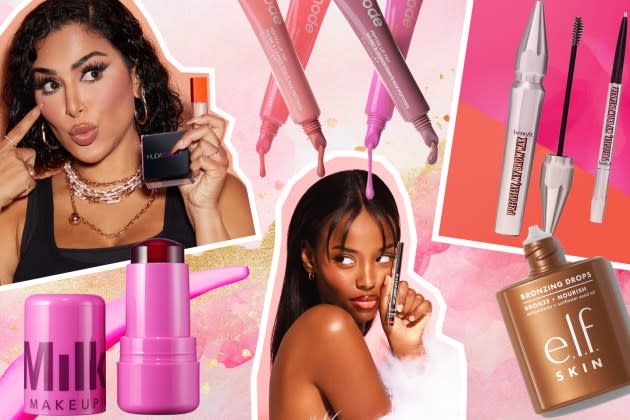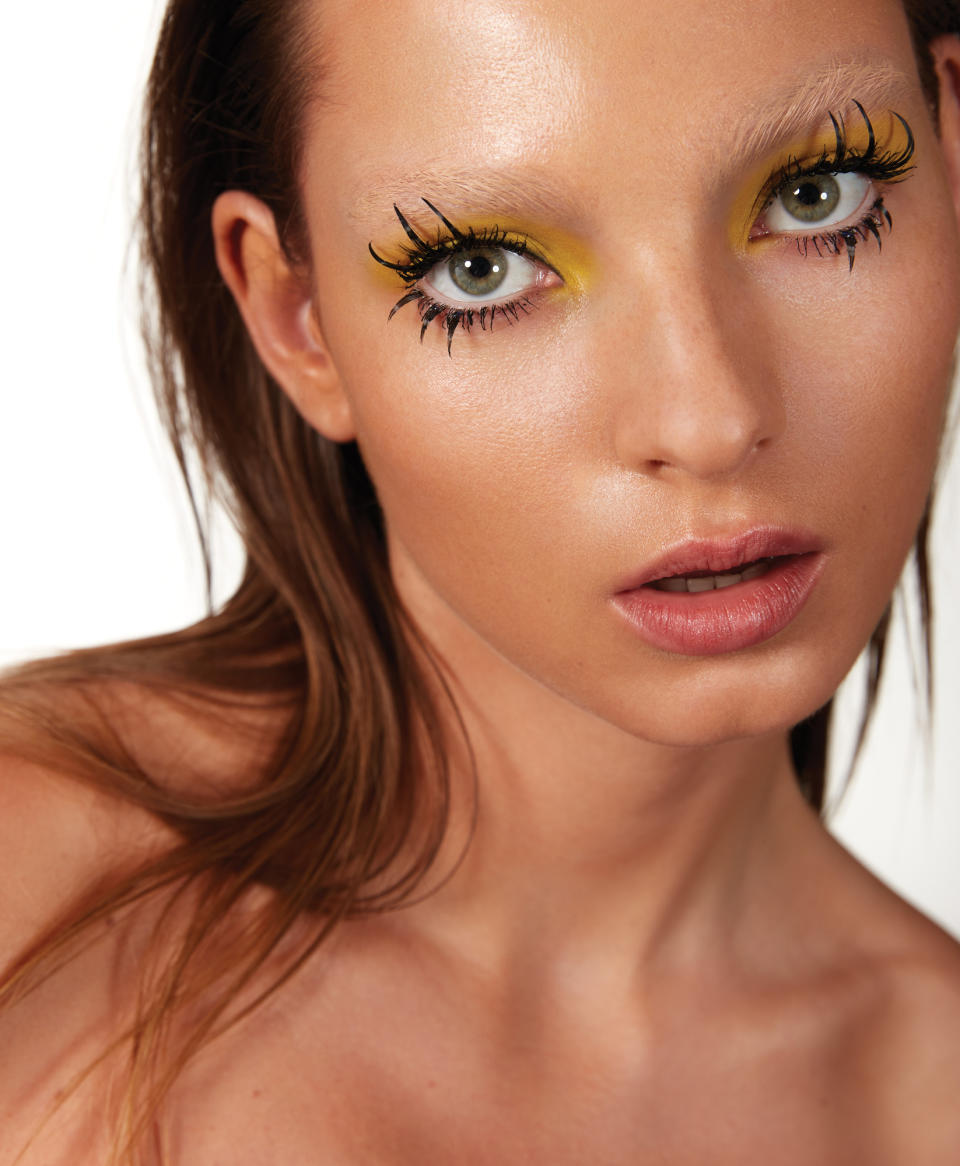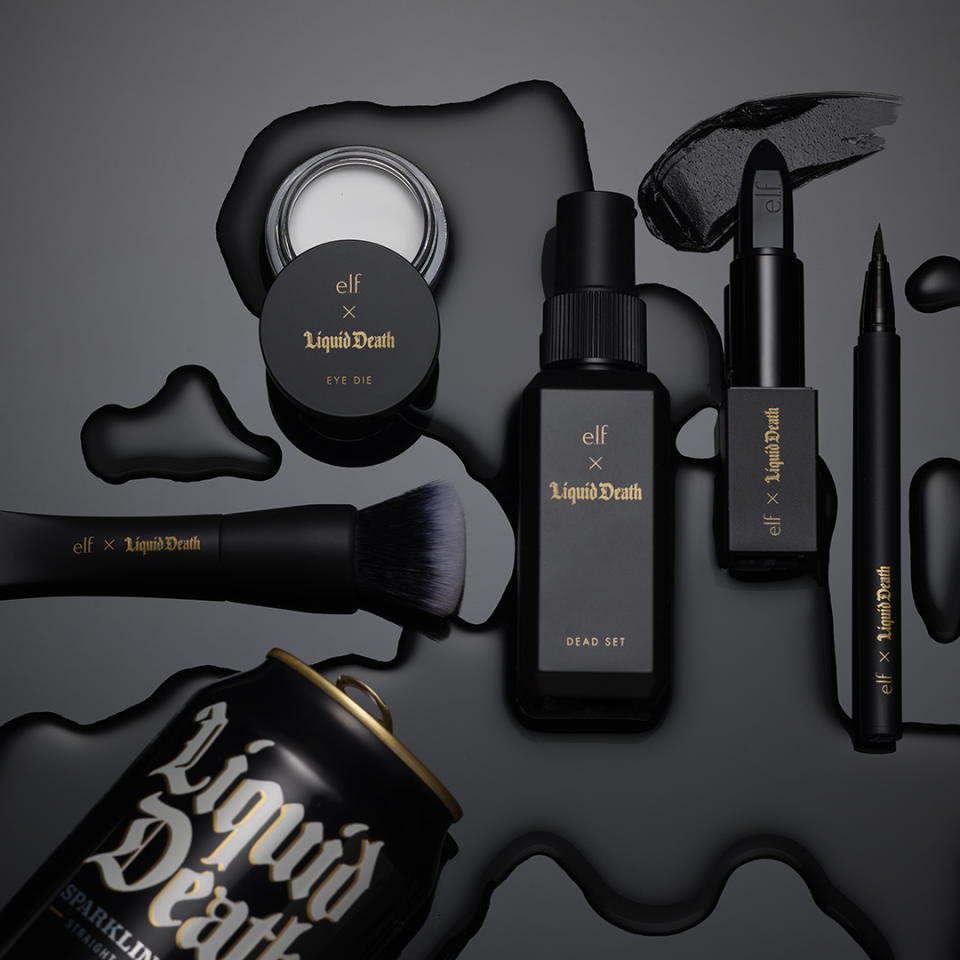How TikTok Fueled the ‘Drop Culture-ification’ of Makeup

Before dropping its Cooling Water Jelly Tints on Feb. 6, Milk Makeup’s internal team knew they had a potential rocket ship on their hands. They just didn’t realize how fast sales would hit the stratosphere.
“We had early indicators out of the gate that it was going to be successful,” said Milk’s chief executive officer, Tim Coolican, of the product that hit virality even before launch, racking up a wait list of more than 60,000 before the shelves were even stocked.
More from WWD
Wacky and Wonderful Couture Beauty Looks From Days Three and Four in Paris
Beauty Stocks Take a Beating After Market Guidance Downgrade
“Our internal team was very excited and our retail partners were very excited — they kept coming back with this kind of, ‘This is unlike anything we’ve every seen before,’ sort of energy,” he continued, of the Jell-O-like hybrid cheek and lip tints conceived by cofounder and head of product development, Dianna Ruth.
“Dianna had talked about Push Pops and Jell-O — things that her kids were excited about, but that also were kind of nostalgic for her and that had that sort of, ‘I can’t help but want to grab it,’ aspect to them,” said Coolican. “We forecasted that it was going to be the biggest launch in the brand’s history — it just became the biggest launch much faster than we thought it would.”

“It was like those movies where everyone’s plugged in, everybody’s dialed in — we were doing outreach with creators, receiving outreach from creators — in those moments when you’re going viral, it’s about 24/7 hands-on-keyboards and making sure you’re truly with the community as they’re experiencing the product.”
Indeed, shoppers couldn’t help but grab them. And prod them. And, in the case of a viral TikTok video by user @imhannahcho, take a (literal) bite out of the $24 jelly tints, available in coral, pink, berry and red. When the product sold out within 24 hours of launch on sephora.com, the scene at Milk’s New York office, “was almost like what I imagined it would be like working at a tech company,” recalled Coolican.

Despite cycling in and out of stock during their first three months, the tints sold roughly 400,000 units during the period, or an average of about one tint every 20 seconds globally.
Equally as significant — people were buying all four shades in one fell swoop.
“On a shaded launch, we might typically see people buying one or two shades, but there was an element of hype and collectibility around [this launch] where people just wanted to see them all and try them all — we saw a lot of content where people were using all four shades together or separately to create different looks — it was pretty unique,” said Coolican.
The jelly tints netted just over $10 million in earned media value on TikTok during the first quarter of 2024, second only to Huda Beauty’s pink and peach Easy Bake Loose Powder shade expansions, per CreatorIQ, which garnered $13.7 million EMV on the platform during the first quarter.

MAC’s lip liners, which have seen a resurgence in popularity thanks to the growing trend of lip combos — any combination of two or more products used to create one lip look — ranked third by TikTok EMV, while E.l.f. Cosmetics’ Camo Liquid Blush, launched in December 2023, took fourth place.
While the catalysts for each of these product’s virality may vary — indeed, there is still no one-size-fits-all formula for that coveted status — each was optimized, whether in terms of product form or marketing, to thrive on TikTok.
“TikTok has completely revolutionized the way we do product development,” said Leigh Winters, vice president of innovation at contract and private label manufacturer Mana Products.
For one, she said, “gone are the days of multiyear product development timelines — the [fastest] brands are going from concept to launch within nine to 12 months.”

Milk’s typical product development timeline, for instance, hovers around the 12- to 18-month mark, though because the brand often banks ideas for future reference, “depending on how complex something is, we can move very, very quickly on things,” Coolican said.
Though Mana and its clients are judicious about which TikTok trends are worth capitalizing on from a product innovation point of view versus taking a marketing-what’s-already-in-your-assortment approach, TikTok has certainly given what Winter has coined a product’s “first moment of truth” increased importance.

“We have to think a lot about how color cosmetics can deliver a quick visible result that can translate digitally, so we spend a lot of time creating makeup in the lab that’s not only easy to use, but can show an immediate effect on camera,” she said, “whereas maybe five or 10 years ago — or even 24 months ago — that might not have been on the checklist for our chemistry lab to look at.”
When influencer-founded Sacheu Beauty ventured into makeup with its Lip Liner Stay-N, $12, in February 2023, the brand unwittingly nailed its first moment of truth with a product that delivers an instant visual wow.
“You apply the lip stain and it goes on like a black line — so there’s kind of this shock factor, and then you peel it off 20 minutes later and reveal this perfect lip shade,” said Tobias T?pel, cofounder of Gloss Ventures, Sacheu Beauty’s incubator.

The product sold out within one week of debuting, after a number of influencer-seeded product videos and organic consumer videos went viral, each depicting users’ awestruck reactions — first at the stark application process, then at the seamless stained finish.
Replenishment that spring was an uphill battle, though. The brand, which debuted in 2020 and at that point sold its skin care assortment at Ulta Beauty, was still relatively small, and couldn’t afford the hefty deposits that came with ordering the amount of stock needed to keep up with demand. (“We launched the Stay-N on ulta.com in the summer and they had more than 10,000 people sign up for the ‘notify me’ list,” said T?pel.)
To make matters both better and worse, Sacheu signed on for the TikTok Shop beta program around the same time and was offering creators 20 to 25 percent commission on sales of the Stay-N.
“We just ordered as much stock as we could afford,” said T?pel, adding that back-to-back sellouts across Sacheu’s channels persisted through the fall, making it tricky to forecast with Ulta Beauty by the time the Stay-N launched full chain in February, which was also around the time the product crossed the 800 million TikTok views threshold. TikTok Shop become an eight-figure business for the brand within mere months.
Today, that business accounts for about half of Lip Stay-N’s sales.
“Lip Stay-N changed the trajectory of Sacheu,” said T?pel, who, alongside founder Sarah Cheung, has pivoted to reposition Sacheu as a makeup brand in terms of all upcoming innovation. “We realized TikTok is such an important marketing channel for us as a small brand; the fact that Lip Stay-N is so TikTokable and it’s so easy to convey the advantages of the product — that’s been a real lightbulb moment for us.”
It isn’t, he said, quite so easy to depict the benefits of a skin care product in the same way. “With a moisturizer or cleanser — it’s hard to convey those selling points through video.”
T?pel anticipates Sacheu — which is rolling out new Lip Stay-N shades roughly every six weeks this summer (including a TikTok-exclusive shade this month meant to emulate the pink of the TikTok logo) — will triple in size in 2024. A new offering in the stain category is slated for an October launch.

“TikTok has sped up our launch cycle a bit; we want to do more launches, more often — and it can be new shades, for example, rather than a new product entirely — but it’s always good to have some sort of newness,” he said.
“We’re seeing some borrowed trends from sneaker culture, or drop culture, in makeup,” said Leslie Hall, founder of Iced Media, pointing to the anticipation-building marketing MOs that preluded Milk’s jelly tints launch and more recently, Hailey Bieber’s Rhode blushes. (Similar to Milk, Rhode cultivated a collect-them-all mentality when it forayed into color cosmetics last fall with tinted iterations of its hero Peptide Lip Treatment. These, too, have routinely vacillated in and out of stock since.)
“Understanding the excitement and playfulness that color cosmetics as a category lends itself to and playing into that excitement and that impulse-buyability, as a brand, is really right,” said Hall.
At Benefit Cosmetics, the additions of two offerings within its Precisely, My Brow franchise this winter simultaneously catalyzed sales and mentions of its bestselling, 2016-launched Precisely, My Brow Pencil.
“Our launch campaign for the wax and detailer really integrated the whole family together, and it was very TikTok-focused,” said senior vice president of global omnichannel marketing, Toto Haba, adding that “we see TikTok as the platform that is most directly leading to sellout — when things go viral on TikTok, they lead to sellout in-store; right now, that is unique to the platform.”

Even an oft-viral brand like Benefit, though, hasn’t necessarily cracked the key to virality. “We have great measurement partners so I can usually trace a [surge] back to the first people to spark it, and there’s just no pattern there. Usually it will be much more UGC creators versus a big time influencer, though, that kind of starts it — and then it peaks and valleys and at some point, just starts to take off,” said Haba.
Influencer relationships are one facet where Benefit has had to significantly tweak its approach in order to thrive in the TikTok era. “We pride ourselves on the relationships we build with our creator community where we work with people when they’re very small and grow up with them — that worked really well in the YouTube days, it worked really well in the Instagram days — it’s more challenging in the TikTok days,” said Haba. “Just because you build a following on TikTok, doesn’t mean you’re going to maintain that following if your content doesn’t perform well.”
This dynamic has led Benefit to take a more thoughtful approach to balancing creator retention and recruitment of creators, especially as it looks to grow the size of its TikTok influencer network “pretty aggressively.”
“We’ve had to be much more nimble in terms of making sure we still maintain relationships with people, but are also being responsive to the new creators who are jumping up all the time — it’s been a scaling challenge,” said Haba.
Another TikTok-ushered dynamic is more brands strategizing on how to plan for virality proactively, rather than respond defensively when a product suddenly takes off. “Marketing is in lockstep with the operations team — they’ve never worked more closely than they have these days,” Haba said. “We make sure our operations team knows what we’re going to launch, what we’re trying to make viral, so we can stock up on that more quickly.”
This aim has accelerated Benefit’s existing path toward centralizing its product production into single countries, a mission it began making headway toward five years ago in the name of sustainability — though recently, it’s also proven good practice for agility.
“Rather than shipping the carton from China and your component from Japan and all these other places — once something goes viral, that centralized product creation allows us to respond much more quickly,” said Haba.
For digital heavy-hitter E.l.f., which surpassed the $1 billion annual sales in its fiscal 2024 ended March 31 for the first time, TikTok has added a channel through which the brand can excel at listening, engaging and developing based on consumer wants.
“The idea that you can optimize something based on the way you’re getting feedback has always been a part of our culture,” said Laurie Lam, chief brand officer, adding that such was the genesis of the brand’s recent bronzing drops.
While the bronzing drops category has had no shortage of entrants over the last few years, a TikTok live session with E.l.f.’s chief marketing officer Kory Marchisotto and CEO Tarang Amin allowed the brand to gauge white space in a crowded space.
“During that session, bronzing drops were cropping up as the most requested item in the chat, and we heard what they were saying and added antioxidants, but also made the product in three shades — which was a huge point of difference for us because that was one of the pieces where our community was finding some shades were too deep for them, or not deep enough,” said Lam.
In March the company also launched a seemingly unlikely, limited-edition collaboration with fast-growing canned water company Liquid Death, which ended up not only selling out within 45 minutes, but drawing a new consumer, with 68 percent of those who shopped the collection being first-time E.l.f. shoppers.

“That’s why you need to work in pencil — you can adapt and move and adjust based on what you’re hearing,” said Lam. “The sweet spot you want is when you’re able to see what your audience is anticipating from you, meet it, but still manage to surprise them.”
The idea of being able to switch gears on a dime came into play at Milk, too, for its jelly tints launch.
“We really had to mobilize across departments to make this launch as big as it could be,” said Kate Millington, senior director of public relations and community engagement. “Making decisions like, ‘OK — do we slightly deprioritize this in order to give this a little more fuel,’ and that has been so successful; virality these days can be such a flash-in-the-pan thing, but we’re four months post-launch and at this point, it still feels pretty viral.”
“There’s a learning around the speed of the community, and the agility that’s necessary to keep up with something that’s truly going viral in today’s environment,” added Coolican. “We’re definitely thinking about that in the context of future launches.”
Best of WWD
